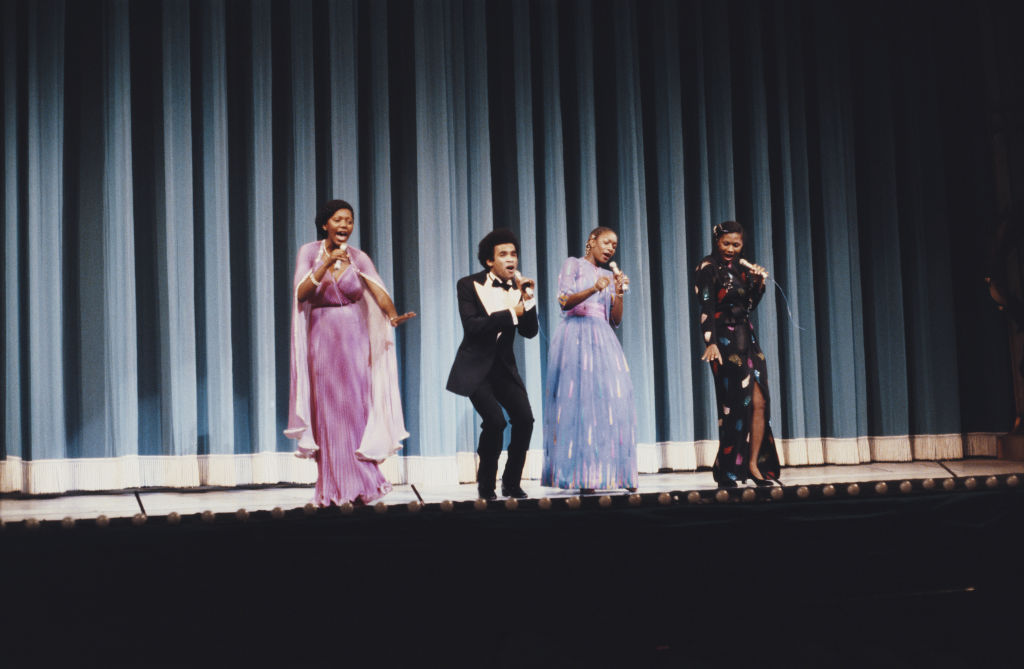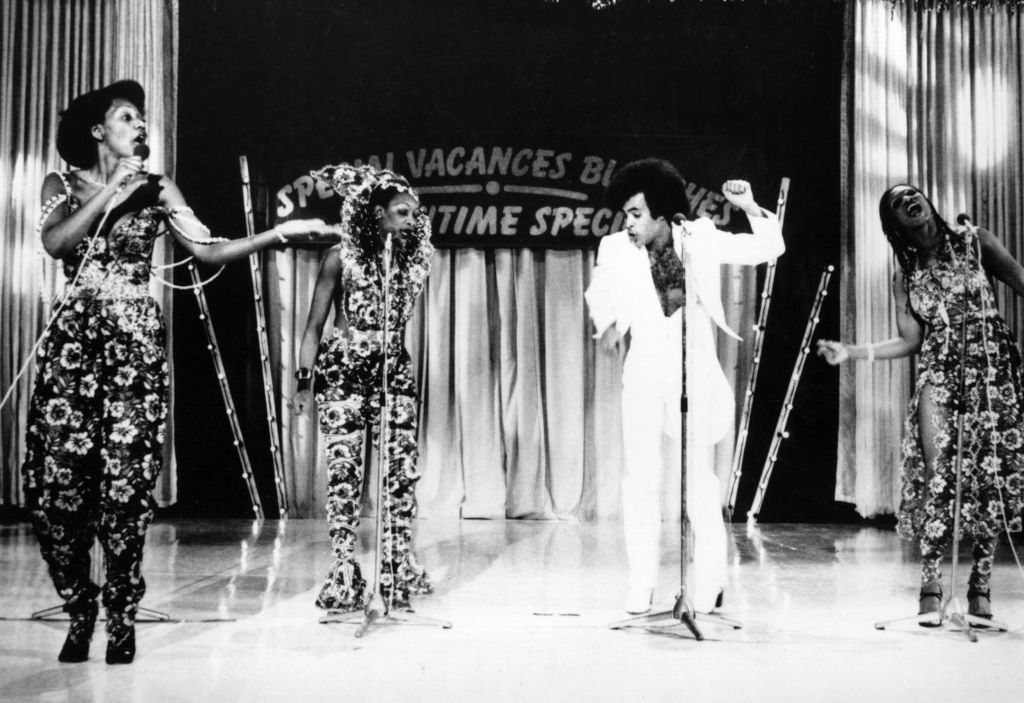For a spell in the late 1970s there were two pop groups which dominated the UK singles charts – both, coincidentally, vocal quartets from continental northern Europe. But while one, Abba, have since become a billion-pound industry with an apparently permanent hologram-shaped presence on the London concert scene, their then rivals for pop supremacy, Boney M, have almost completely disappeared from public consciousness. And this is a shame because Boney M remain uniquely noteworthy in one field in particular: weirdness.
There are other contenders: Little Richard, the Sweet, Village People, the KLF. But judged by the twin metrics of just how odd they were in tandem with quite how successful they became, I think the case is overwhelming: Boney M were the weirdest mainstream pop act of all time.
They didn’t just take on Abba but at times beat them, in 1978 releasing the then second best-selling UK single in history
This month’s 50th anniversary of the group’s first single seems a timely moment to examine how thoroughly strange they were. Avoiding more obvious subject matter like falling in love or breaking up, their singles were about an obscure 1930s US matriarch bank robber and her family, the turbulent last days of imperial Russia, the troubles in Northern Ireland, an acid trip and the joys of a summer break set to a reworking of the Victorian nursery rhyme ‘Polly Wolly Doodle’. Then there was an overtly Christian calypso carol and a biblical psalm.
For a bubblegum pop act there were also unlikely choices of sources for their many cover versions: Neil Young, Creedence Clearwater Revival, the Yardbirds, Iron Butterfly and Jamaican ska acts the Melodians and Prince Buster – they covered his ‘Al Capone’ as ‘Baby Do You Wanna Bump’ three years before the Specials did it as ‘Gangsters’.
They broke the established rules on gender proportionality in a vocal quartet: either all of one gender, as in the Four Tops, or two of each, as with rivals Abba. Instead Boney M were girl, girl, girl, boy and – radically – that boy wasn’t even the lead vocal. In fact he never sang a note, which we will come to shortly.
They came out of unfashionable Germany but were of Caribbean heritage – a pop first: the islands of Aruba and Montserrat have yet to win a single Olympic medal between them, but thanks to Boney M both have produced artists who have had number one hits across Europe.

They used already-outdated 1960s hipster slang (‘He was the meanest cat’) combined with stilted second-language English (‘But to Moscow chicks he was such a lovely dear’). And even by the standards of the 1970s, they were extravagantly dressed, with gold and silver lamé outer-space stylings, animal print, wild hairstyles and flamboyant performances. There were suggestions that Boney M’s look may have been the style inspiration for this autumn’s strange and risible Jaguar relaunch ad.
But for all this unusualness, Boney M were, from 1977-79, absolutely massive in Britain and across Europe, not just taking on Abba but at times beating them: the 1978 their double A-side ‘Rivers of Babylon’/‘Brown Girl in the Ring’ became the then second best-selling UK single of all time, far outperforming anything the Swedes ever released here.
Yet in December 1974, when that first single came out (and flopped), Boney M weren’t a group at all – just a name dreamed up by German pop producer Frank Farian while watching an Australian detective show featuring a character named Napoleon Bonaparte. From the outset nothing with Boney M was quite as it seemed. Farian himself didn’t even exist. He was a character created by one Franz Reuther, a former chef who had already spent a decade trying and failing to be a big noise as a pop Svengali.
Of course, in the history of manufactured pop acts, these invented identities are not unusual, as I mentioned in this piece last year about Alvin Stardust. But Boney M took the idea of pop fantasy to its limits. Farian, who died in January, sang the deep-voiced male vocals himself but hired Bobby Farrell – who looked like a Black Panther dressed in the clothes of Pan’s People – to pretend to sing his parts on stage.
That leads to my favourite Boney M fact: Farrell died in 2010, not just in the same city (St Petersburg) but on the same date (30 December) as his most famous subject, Rasputin, had died 94 years earlier. Ra-ra-rather spooky that. (No one had seemed to mind that Farrell and fellow front woman Maizie Wiliams didn’t actually sing on the records to which they mimed. But when Farian tried the same trick a decade later with his next creation, Milli Vanilli, it exploded into a scandal.)
The band’s identity was established on their breakthrough 1976 single, ‘Daddy Cool’, which opens with Farian singing ‘She’s crazy like fool’ before the female voices reply ‘Wild about Daddy Cool’ – though this was so often misheard as ‘What about’ that Farian, ever the crowd-pleaser, changed the lyric to suit. This male/female call-and-response over a hook-heavy Euro disco beat, augmented by gimmicks like pretend audio clips from US news bulletins, became the group’s signature sound. It was not sophisticated but it worked: you only had to hear the song once and it was stuck in your head forever.
At their peak, they were so well known that they were a natural subject for parody. The then popular comedy act the Barron Knights achieved their most neatly-done spoof by changing ‘Rivers of Babylon’ to: ‘There is a dentist in Birmingham / He fixed my crown / And as I slept / He filled my mouth with iron.’ Abba never achieved this kind of alternative acclaim.
They also inspired one of the most enduring football terrace anthems: ‘Hark now hear the West Ham sing, the Tottenham run away’ (or variations thereon). Again something Abba, with all their millions, can only dream of.
Despite having never been fashionable – even during the era of their wild success they seemed to exist outside fashion – they have managed to become very unfashionable now. You are only likely to hear them these days in a Christmas context (‘Mary’s Boy Child’) or perhaps Rasputin at a wedding disco. Boney M reside in music history’s ‘Where are they now?’ file. Five decades on, their enormous popularity feels like a strange dream – a very strange dream indeed.






Comments